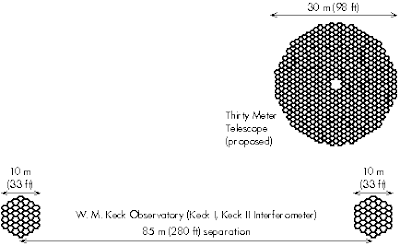Cuesta College, San Luis Obispo, CA
Students were asked the following clicker question (Classroom Performance System, einstruction.com) at the end of their learning cycle:

What disadvantage does the proposed Thirty Meter Telescope have, compared to the combination of the two W. M. Keck Observatory telescopes used as an interferometer?
(A) Light-gathering power.
(B) Resolving power.
(C) Magnifying power.
(D) (More than one of the above choices.)
(E) (None of the above choices.)
(F) (I'm lost, and don't know how to answer this.)
Section 70158
(A) : 12 students
(B) : 30 students
(C) : 10 students
(D) : 9 students
(E) : 4 students
(F) : 0 students
This question was asked again after displaying the tallied results with the lack of consensus, with the following results. No comments were made by the instructor, in order to see if students were going to be able to discuss and determine the correct answer among themselves.
Section 70158
(A) : 2 students
(B) : 51 students
(C) : 8 students
(D) : 2 students
(E) : 1 student
(F) : 1 student
Correct answer: (B)
Light-gathering power depends on the area of the primary mirror (or lens) of a telescope, while the resolving power depends on the diameter of the primary mirror, whether it is a single contiguous piece (as for the Thirty Meter Telescope), or separated components (as for the Keck Interferometer).
Pre- to post- peer-interaction gains:
pre-interaction correct = 46%
post-interaction correct = 78%
Hake (normalized) gain <g> = 60%
No comments:
Post a Comment